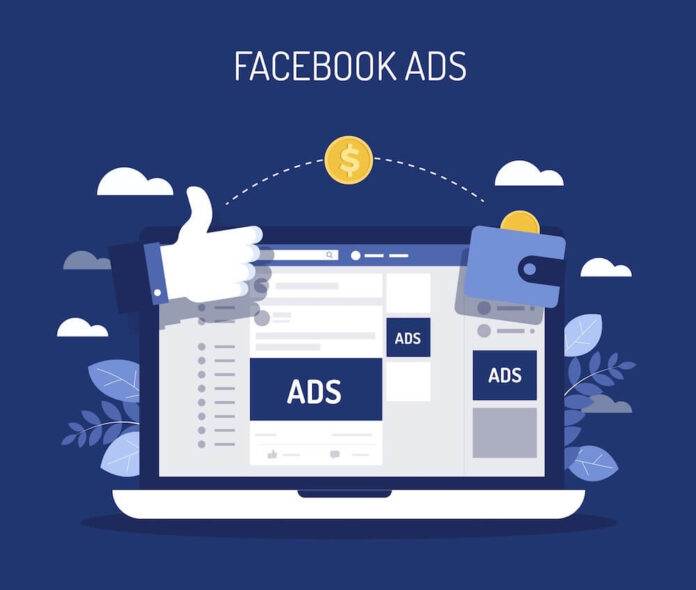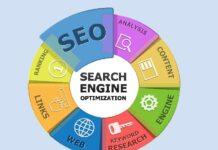So today, we’re going to answer the following questions:
- How much do Facebook ads cost in 2021?
- What makes Facebook ads worth the price?
- What factors influence my Facebook advertising costs?
- How do I make the most of my budget?
What makes Facebook Ads worth the price?
Advertising on social media in general has its benefits, but let’s take a look at some of the money-saving advantages Facebook has over other platforms, like Pinterest, LinkedIn, and Instagram
Facebook is still the most popular
With 2.8 billion users worldwide, Facebook currently ranks as the largest and most active social media platform in the world.
This is compared to YouTube (2.3 billion), Instagram (1.3 billion), and TikTok (7.3 million).
Facebook has the most even distribution of users compared to other popular social media platforms like Instagram and Linkedin—which means you can target a larger range of age groups with your ads.
Precise targeting
Precise targeting means reduced Facebook ad costs.
If you want to target someone in a 15-mile radius of a particular address or zip code, you can do that. If you want to reach parents with children 3-5 years old who love ice cream, you can do that too. And we haven’t even touched lookalike and custom audiences.
Flexibility with budgeting
Facebook offers two types of budgeting to accommodate different advertising strategies. Lifetime budgets, which are good if you run ads on a schedule and/or a fixed budget and end date; and daily budgets, which are good for maximizing ongoing campaigns and pacing and planning around a fluctuating budget.
Affordability
Facebook ads are among the most cost-effective ad types for any business, whether it spends $10 a day or thousands.
With testing, remarketing, and reporting capabilities, you have the tools to make the most of every dollar you spend.
For context, here are the average CPCs for each of the four major social media advertising platforms in 2021.
- Twitter: $0.38
- Facebook: $0.97
- Instagram: $3.56
- LinkedIn: $5.26
How much do Facebook Ads cost in 2021?
Here we’re breaking down the cost of Facebook ads by cost per click (CPC), cost per thousand impressions (CPM), and cost per engagement (CPE). Keep in mind that these are averages across all industries!
Average Facebook CPC 2021
The average Facebook CPC across industries and across campaign objectives in 2021 is $0.97.
When you break average CPC down into campaign objectives, you see the CPC averages range from $0.25 to $3.30 .
For Akvertise clients, the average CPC in Q1 2021 was $1.20 but decreased to $0.80 in Q2 2021. We saw similar trends in 2020 across client accounts.
Average Facebook CPM 2021
The average CPM on Facebook across all industries is $11.54.
When you break the averages out by campaign, you see CPMs ranging from $2.00 to $30.97.
At Akvertise, we see a CPMs range from $6.50 to $11.50.
Facebook CPE 2021
The average Facebook CPE in 2021 is $0.11, which is higher than what we see at Akvertise ($0.01 to $0.05).
When average CPE is broken out by campaign objective, we see CPEs ranging from practically a penny to $0.70.
Factors that influence the cost of Facebook ads
Just like Instagram ads costs, Facebook ad costs are influenced by a number of variables.
1. Campaign objectives
Facebook campaign objectives are a prominent factor in pricing since they relate to the value of the desired goal and where in the funnel your users are.
For example, Brand awareness or Engagement campaigns will cost less than lower-funnel campaigns like Conversions that drive purchases. It’s easier to get someone to engage with an ad than it is to entice them to click through, open up their wallet, and complete a purchase.
2. Audience size
Facebook ads targeting larger and broader audiences will generally cost less than for smaller audiences.
You will typically see lower costs in prospecting, upper-funnel, cold-audience campaigns compared to retargeting, lower-funnel, warmer-audience campaigns, because the audiences of the latter tend to be more specific, smaller in size, therefore more competitive.
3. Daily budget
If your daily budget is on the lower end, it may take longer for Facebook’s algorithm to exit the Learning Phase. For this reason, costs for new ad sets are often higher up front while the system understands how your audience behaves with your ads and how to optimize them for the highest engagement. If your ads are well engaged with, Facebook and Instagram will reward you with lower costs over time.
4. Click-thru rate
Click-thru rate (CTR) can also play a role in you Facebook ad costs. If CTR is low, especially in a website traffic campaign, you may then see higher costs as Facebook understands that there may be some disconnect between your target audience and the messaging in your ads.
A healthy Facebook CTR is about 2%. More often than not, the higher your CTR climbs, the lower your CPCs will be.
5. Seasonality
Historically speaking, in the latter part of Q3 and Q4, costs tend to temporarily increase as the advertising landscape changes for the holiday ecommerce season. Competition ramps up as brands increase their budgets and gain more impression share, thus, increasing costs for all advertising brands.
Keep that in mind as you budget for the year and if you aren’t in ecommerce or running promotions during the end of the year, you may strategize what you will want to do to keep a presence or to scale back.
How to lower Facebook ad costs
Be sure to check out our full post on this topic, but here are our top three:
1. Create a full-funnel strategy
To use your budget wisely, choose funnel-appropriate campaign objectives. In general, Awareness and Consideration campaigns are suited for the top of the funnel; Consideration and Conversion campaigns align with the middle of the funnel; and Conversion campaigns are best for bottom-funnel conversions.
In short, begin with upper-funnel campaigns to reach more people in your target audience at a lower cost, and then move your way toward conversion campaigns that optimize for your purchase-driving conversion events.
Learn how to create a full-funnel Facebook advertising strategy here.
Note that some brands can certainly run a Conversion campaign targeting upper-funnel audiences with lower priced products or something that may make for a good impulse buy.
People can and do make purchases upon first interaction with a brand on Facebook, however, most will need more touch points from a brand so you can gain their trust, showcase your benefits, and entice them to convert.
2. Use the Automatic Placements setting
While it can be tempting to pick and choose where you want your ads to appear within the Facebook network, the best way to save money is to start with the default Automatic Placements setting. In fact, not doing so is on our list of 7 Budget-Wasting Facebook Ads Mistakes.
By appearing on all placements, Facebook can get a better idea on where to best serve your ads, thus lowering your costs. You’ll also get out of the learning period faster so that you can apply data-informed money-saving optimizations as soon as possible.
Your targeting conditions will remain the same regardless of placement, which means Facebook can then serve ads to user in a lower volume, but lower cost placement that can help drive incremental revenue for you.
3. Run Facebook A/B testing
You can also help lower your costs at the ad level by A/B testing variables in your ads—one at a time—to better understand what is and is not working well. Test out the text, headline, images and/or videos, landing pages, and more.
Facebook is not the set-it-and-forget type of platform, so it is best to continuously test and aim for better results. Running tests in the ad level can help improve your engagement rates and CTR and stretch your budget further.
The cost of Facebook Ads in 2021 (recap)
- Exposure, targeting, budgeting flexibility, and affordability all make Facebook ads worth the cost.
- For Facebook ads in 2021, the average CPC is $0.97, the average CPM is $11.54, and the average CPE is $0.11
- Factors that influence Facebook ad costs include campaign objectives, audience size, daily budget, click-thru rate, and seasonality.
- Three of the many ways to make the most of your Facebook ad spend include aligning objectives with your funnel, using the Automatic Placements setting, and A/B testing your ads. #KhabarLive #hydnews








[…] see it being much more cost-effective than the results you’re getting with Facebook. Read More: Facebook Ads and Google […]
Comments are closed.